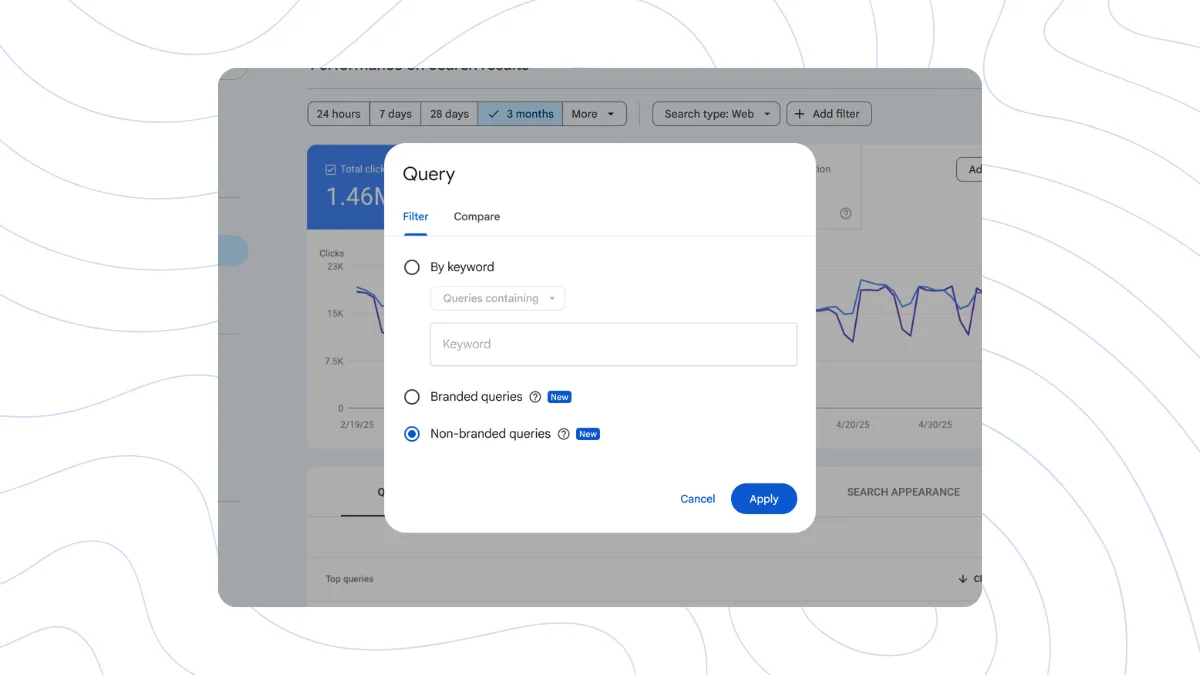Contact Info:
+88 01601135050
[email protected]

Google’s Branded Queries Filter in Search Console helps you separate branded from non-branded searches, giving clear insights into your brand’s search traffic and performance. Track clicks, impressions, and CTR for smarter SEO decisions.
You know that feeling when you’re digging through data, squinting at a spreadsheet, and trying to figure out if people actually know your brand or if they just stumbled upon you by accident?
It’s a classic SEO headache.
You spend hours filtering keywords, creating regex formulas that look like alien code, and manually sorting through thousands of queries.
Well, grab a coffee and sit down, because Google just dropped a feature in Search Console that is going to save you so much time.
They’ve officially introduced a Branded Queries Filter. And honestly? It’s about time.
Before we dive into the shiny new buttons, let’s clear up the basics.
Imagine you own a shoe store called “Zippy Kicks.”
If someone goes to Google and types in “best running shoes for marathons,” that is a non-branded query. They have a problem (they need shoes), but they don’t know who is going to solve it yet. If they find your site, that’s organic discovery magic happening right there.
Now, if someone types in “Zippy Kicks return policy” or “Zippy running shoes reviews,” that is a branded query. They already know you. They aren’t looking for any shoes; they are looking for your shoes.
Why does this distinction matter? Because these two groups of people are in totally different headspaces.
Until now, separating these two groups in Google Search Console (GSC) was… let’s just say “not fun.”
The best part about this update is how simple it is. You don’t need to be a coding wizard anymore.
When you log into your Search Console Performance Report, you’ll see a new filter option. It’s not just a keyword search; it’s a smart filter powered by Google’s AI brain.
Here is what you can do with it:
You can instantly segment your traffic into “Branded” and “Non-Branded.” This means you can see exactly how many clicks and impressions are coming from people who specifically typed your name into the search bar.
Flip the switch to “Non-Branded,” and you get a crystal-clear view of your true SEO performance. This is the traffic you earned purely through content quality and keyword targeting, without relying on your brand’s reputation.
There’s also a new card in the “Insights” report that breaks down your total clicks. It gives you a quick visual comparison of how much of your traffic is reputation-based versus discovery-based.
“Okay,” you might say. “It saves me five minutes of filtering. Big deal.”
Actually, it is a big deal! Here is why this matters for your strategy.
Let’s say you look at your data and see that 90% of your traffic is Branded. That’s great for brand loyalty, but it might mean your general SEO strategy is weak. You aren’t attracting new people; you’re just serving the ones you already have.
On the flip side, if 99% of your traffic is Non-Branded, you are an SEO genius, but maybe you have a branding problem. People are visiting your site, but they aren’t remembering your name enough to search for it later.
We have all had that moment where a client or boss asks, “How is our SEO doing?” and the numbers look huge—but half of it is just people Googling the company name because they forgot the URL. That’s not really “SEO success” in the traditional sense; that’s just navigational traffic.
This filter lets you strip away the brand noise and show the true impact of your content efforts.
Previously, if you wanted to track this, you had to write a Regular Expression (Regex) filter that looked something like: .*brandname.*|.*misspelling.*|.*productname.*.
And if you launched a new product? You had to update the code. If people started misspelling your name in a new way? Update the code.
Google’s new system handles the variations, typos, and related products automatically. It knows that “Gogle” means “Google,” and it does the heavy lifting for you.
Google admits that it’s an AI-assisted system, so it might not be 100% flawless every single time. Context is tricky, even for robots. However, compared to the manual labor we used to do, this is a massive upgrade.
Also, keep in mind this is rolling out gradually. It’s currently available for top-level properties (like domain properties) with enough traffic data. If you have a tiny site that launched yesterday, you might not see it just yet.
This is one of those quality-of-life updates that makes digital marketing just a little bit less stressful. It helps us answer the age-old question: “Are we growing because we’re famous, or are we growing because we’re good?”
Now, you can finally answer that with a single click. So go check your Search Console—you might just find some fascinating insights waiting for you.
Sources: Google Search Central Blog